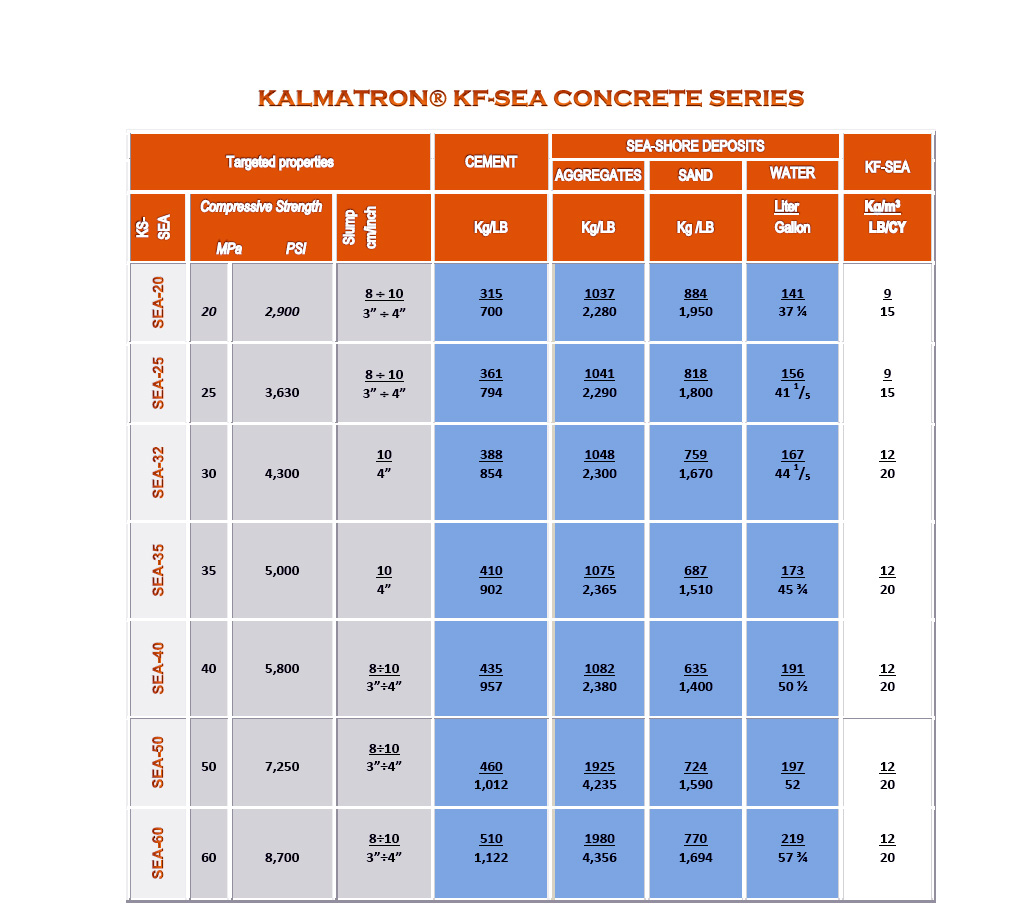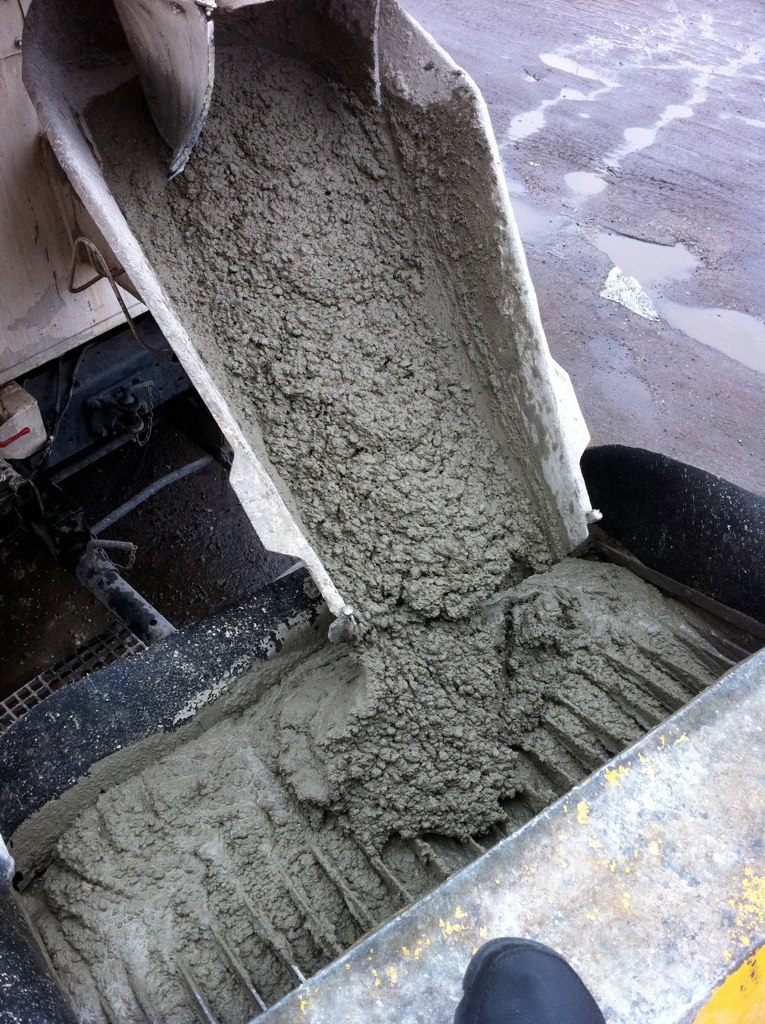Notes:
1. All calculations are done for a volume of concrete mix of 1 m3.
2. Some data of a weight has been changed in respect of reduction of amount of water and admixtures.
3. Reduction of cement is available by 15% per each batch without affecting of targeted concrete parameters.
4. Please note, that the bigger volume of mixes the more noticeable advantages of trial mix.
RECOMMENDATIONS FOR SPECIMENS PREPARATIONS WITH KALMATRON® KF-SEA
CONTROL MIX
1. Dry ingredients of the Control mix design should be identical to the dry ingredients of the Trial mixes.
2. Amount of water, supplementary materials and admixtures may be applied for control mix in accordance with existing standards, but they never
should be used for trial mix.
3. Ingredients, mixing batches and specimens of control mix shouldn’t be in a contact with trial ingredients, mixing batches and specimens
containing KALMATRON® KF-SEA during of mix preparation or curing procedure.
TRIAL MIX
4. Trial mixes containing KF-SEA admixture should be prepared with shown dosage of water that poured gradually till acceptable workability. Do not
pursue the standard slump. Otherwise performance of KALMATRON® KF-SEA will be retarded for 10 to 15 days after 28 days.
5. Do not dissolve KF-SEA with water before application into mix.
6. Please, strew KF-SEA into mixer with batch.
7. Mix for 7 to 10 min. For the high-speed blender the mixing time is at 2 to 3 min.
8. In a case if that mix is still stiff, please add 1.0 Liter of water per 1 m3 of batch gradually by 0.25 Liter during of mixing. After every pouring, please
evaluate workability.
9. Do not apply any other additives, chemicals or supplementary materials with KF-SEA except for Air- Entrainer where it is required to be applied by
the environmental conditions.
10. Concrete batch for molding of control specimens should be taken from mixer before KF-SEA application to avoid chemical’s fringe side effects
or to be prepared into separate mixer.
CURING
11. The most preferable curing environment is a water or “vapor-fog”. Do not apply any salts, minerals or chemicals into curing environment to get
classical results. After proper curing, place specimens into any trail environment for evaluation of compressive strength and resistance to any
type of corrosion.
12. TRIAL SAMPLES SHOULD NOT TO BE PLACED IN THE SAME CURING BATHS WITH CONTROL SAMPLES.
STANDARDS & TEST METHODS
• The test procedures are not has to be different from the local and international regulations.
• For recognition of proper test readings, please keep in mind that concrete with KF-SEA behave like High Performance or High Alumina concrete does.
• That’s why for evaluation of ion-chloride penetration, please do not use the test procedures that based on comparison of
electric conductivity. Fresh concrete specimens with KF-SEA are already more conductive to electricity by its formulation.
After 90 to 120 days they electric conductivity will be normal.
• Upon completing of your testing, please send us a courtesy copy of your test results.
RECOGNIZABLE TEST RESULTS
• SLUMP OF THE TRIAL BATCH IS LOWER AT 1.5 TO 2 TIMES THAN CONTROL ONE. WORKABILITY IS THE SAME OR EVEN BETTER
• SHRINKAGE OF THE TRIAL SPECIMENS IS LOWER AT 2 TO 3 TIMES THAN FOR CONTROL SPECIMENS.
• YIELD OF TRIAL’ READY MIX IS HIGHER AT 5% TO 7%.
• EXOTHERMIC HEAT IS AS LOWER AS 2 TIMES.
• EARLY STRENGTH OF THE TRIAL SPECIMENS ON 1ST OR 7TH DAY AT 25% OR MORE ABOVE THE CONTROL READINGS.
• AFTER 7 DAYS OF CURING, PLEASE NOTE THAT COLOR OF TRIAL SPECIMENS IS DARKER THAN CONTROL ONE.
• IT DEPENDS ON A LEVEL OF SALT CONTAMINATION WHERE WE CAN EXPECT ADVANTAGES OF LOW CEMENT
CONTAINING CONCRETE MIXES.

